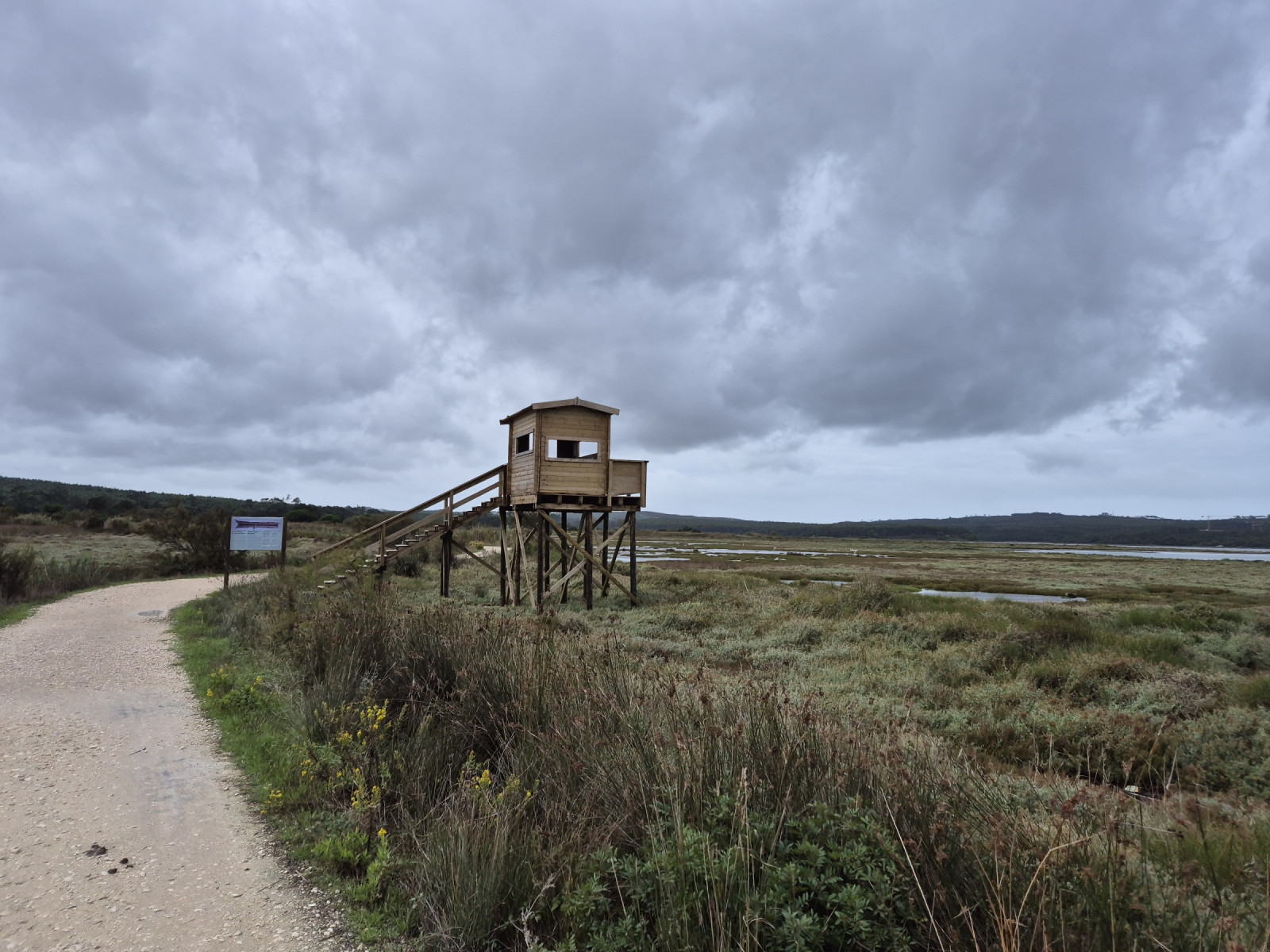Beschreibung
Lagoa de Óbidos is the largest saltwater lagoon in Portugal. The combination of the saltwater from the ocean and various freshwater sources inland has created a wetland that attracts many birds. There are several hides and lookout towers and a pedestrian path along the lagoon gives you the opportunity to enjoy many species of gulls, ducks, waders, birds of prey and all kinds of migratory birds. Rosaflamingo, Stelzenläufer, Seeregenpfeifer, Sandregenpfeifer, Kiebitzregenpfeifer, Regenbrachvogel, Großer Brachvogel, Pfuhlschnepfe, Uferschnepfe, Knutt, Alpenstrandläufer, Grünschenkel, Brandseeschwalbe and Kormoran are some of the species you can observe here.
_________________________
Português: A Lagoa de Óbidos. sistema lagunar costeiro mais extenso da costa Portuguesa, é talvez o melhor local junto à costa Portuguesa para se observar aves aquáticas entre a foz do Mondego e o estuário do Tejo. São muitas as espécies que aqui habitam e muitas outras que usufruem deste ecossistema durante as suas migrações, tais como garças, abibes, pernilongos, maçaricos, borrelhos e flamingos.
Details
Zugang
There are areas for cars and bicycles to explore the area, and everywhere is accessible walking. There are several accesses, all the way from Foz do Arelho to Bom Sucesso. A natural gravel path connected by wooden bridges has been constructed on the south side of the lagoon. The path offers beautiful views over the lagoon.
_________________________
Português: Junto à costa, cerca de 10 km a oeste da cidade das Caldas da Rainha. A partir de Lisboa ou das Caldas da Rainha, toma-se a A8 e sai-se seguindo as indicações para Peniche. Segue-se a estrada de Peniche durante 3 km e vira-se à direita onde diz Vau e Bom Sucesso.
.jpg)


